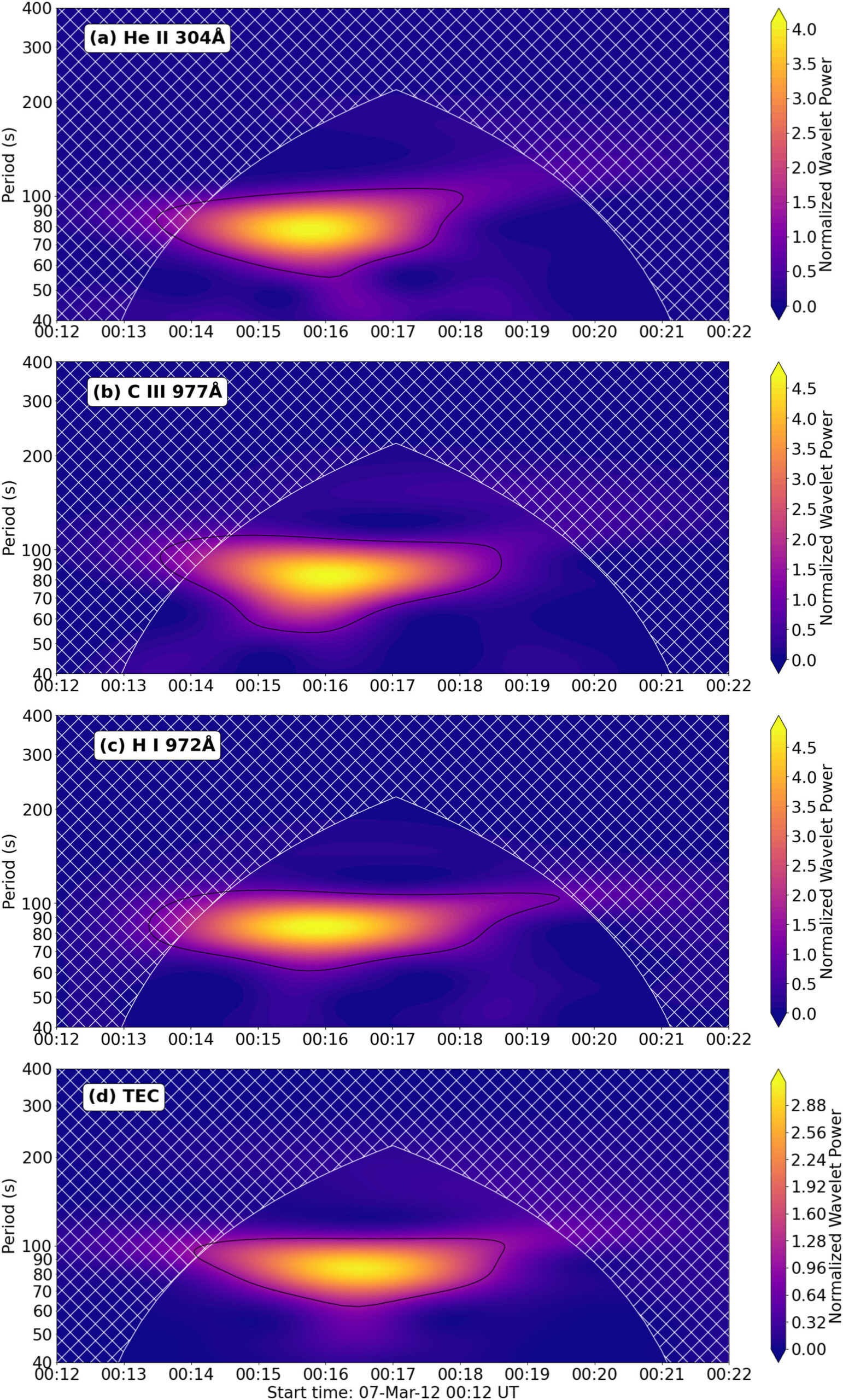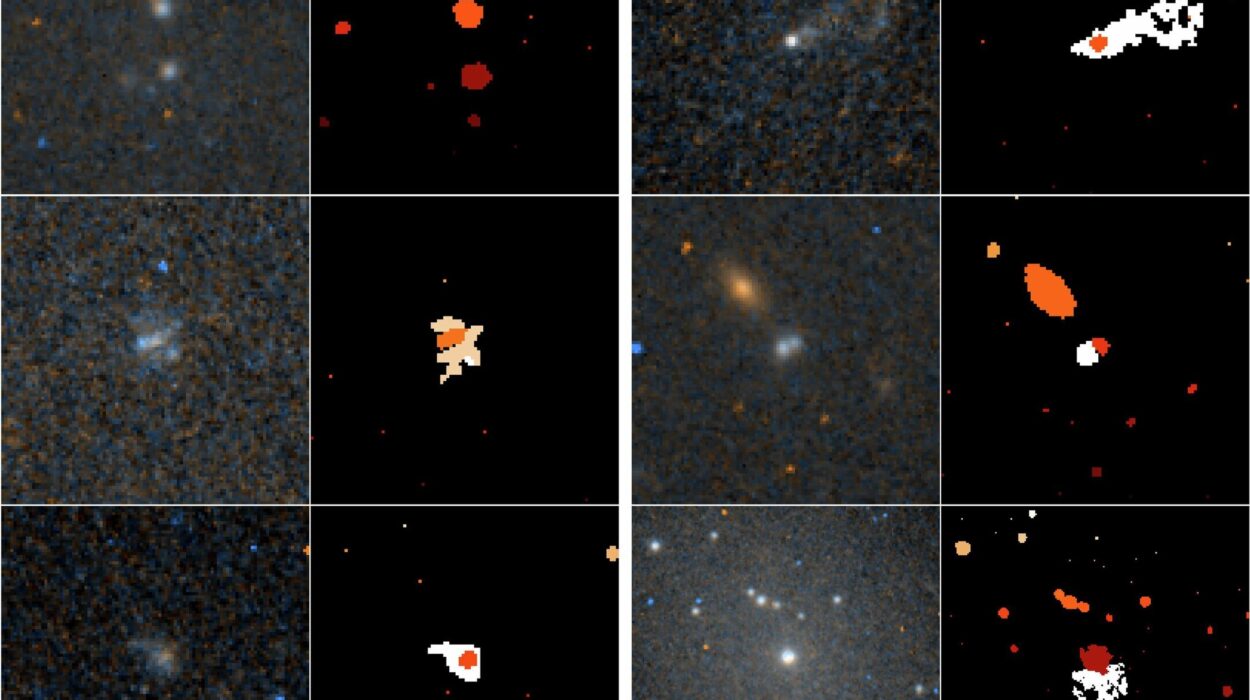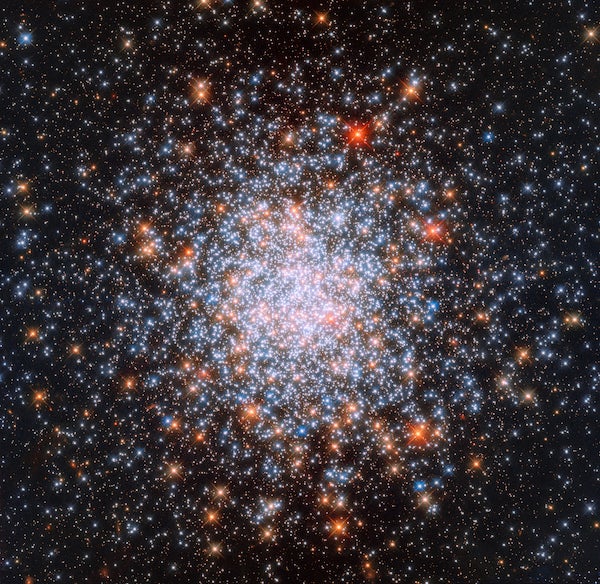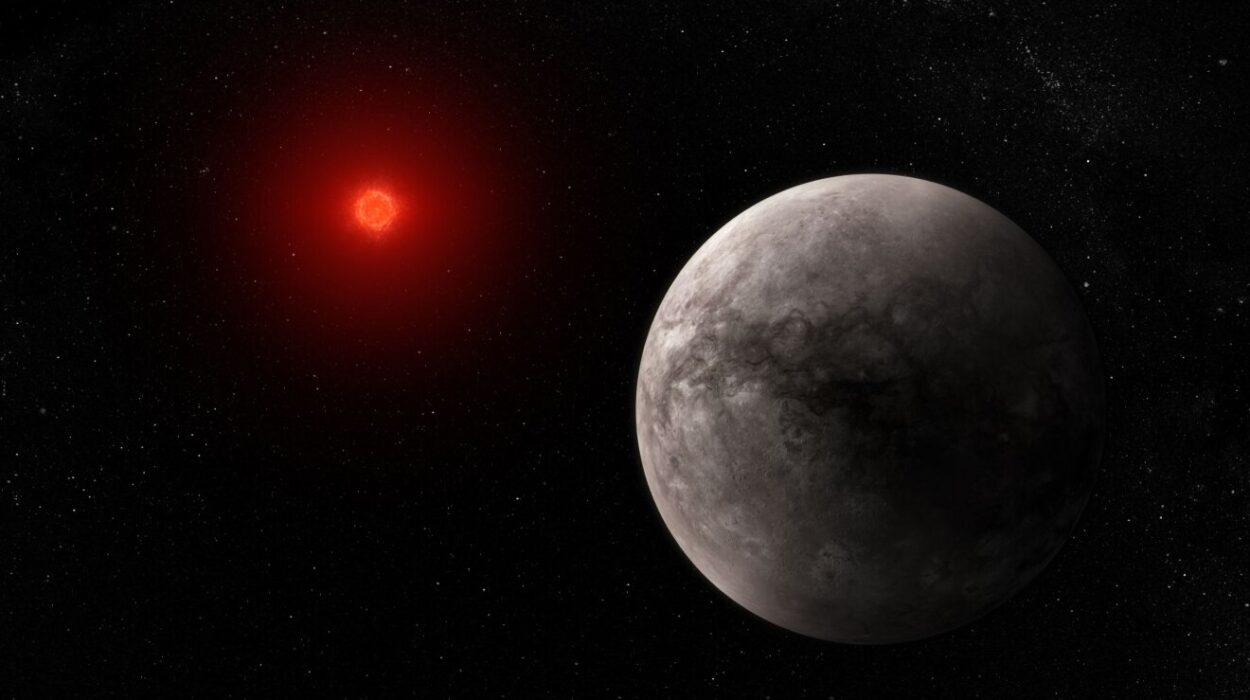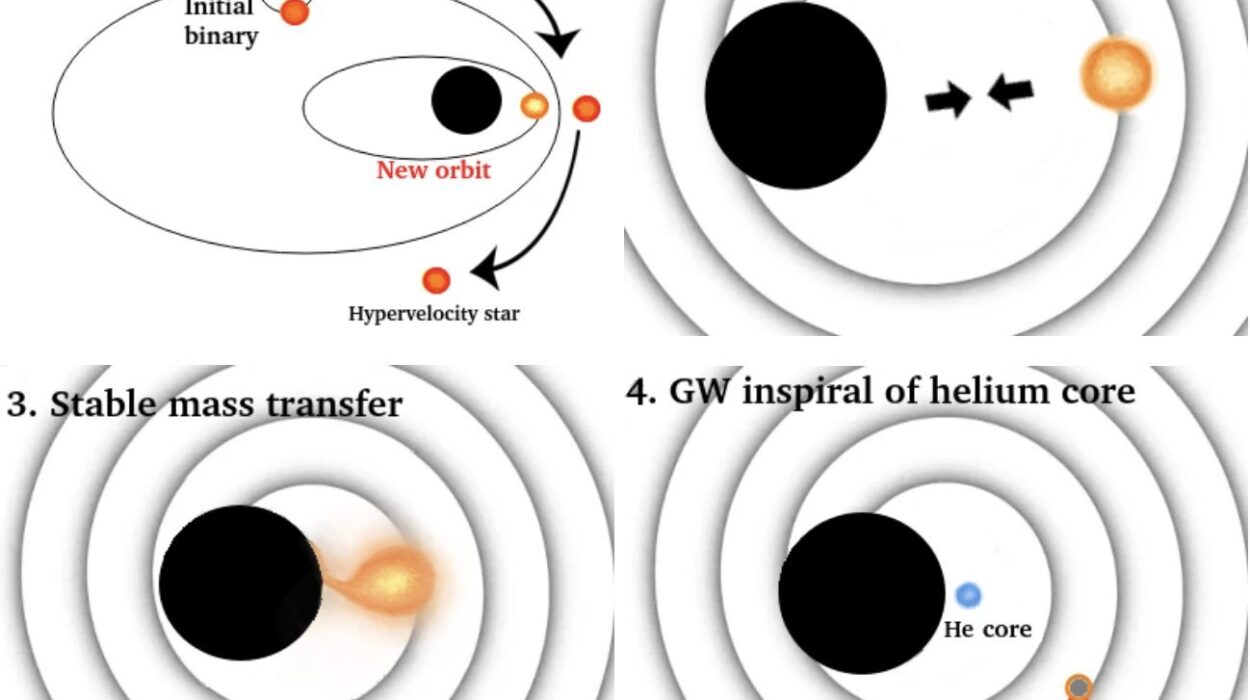The Earth, cloaked by its thin veil of atmosphere, has always danced to the rhythm of the sun. Yet until now, scientists have only grasped part of the choreography. Thanks to groundbreaking research from Queen’s University Belfast, a far more intimate, astonishing connection has been revealed—a celestial pulse syncing the sun and the Earth in ways never before observed.
A New Discovery from a Familiar Giant
The sun, our constant companion, is no stranger to volatility. Solar flares—massive bursts of radiation arising from magnetic storms on its surface—erupt regularly, hurtling charged particles and intense energy across the solar system. While these events have been studied for decades, new findings published in the Journal of Geophysical Research: Space Physics suggest we have been underestimating their immediate and profound impact on our planet’s atmosphere.
In an ambitious study led by Aisling O’Hare, a Ph.D. student at Queen’s University’s School of Mathematics and Physics, researchers found for the first time that the Earth’s atmosphere does not merely react sluggishly or broadly to solar outbursts. It pulses in rhythm with them—responding to the solar heartbeat within mere seconds.
“We’ve been able to show, for the very first time, that the sun’s flare pulsations and Earth’s atmosphere were pulsing in sync during a solar flare,” O’Hare explained, her excitement palpable. This revelation not only deepens our understanding of solar-terrestrial interactions but raises urgent questions about the vulnerabilities of the technological infrastructure we increasingly rely upon.
Listening to the Solar Heartbeat
The research focused on a particularly powerful solar flare that occurred in 2012—a fiery outburst long cataloged by space scientists but now revisited with fresh eyes and cutting-edge tools. Using a space-based satellite, O’Hare and her team detected rhythmic pulses emanating from the sun every 90 seconds. These weren’t random fluctuations; they were a steady beat, like a cosmic metronome.
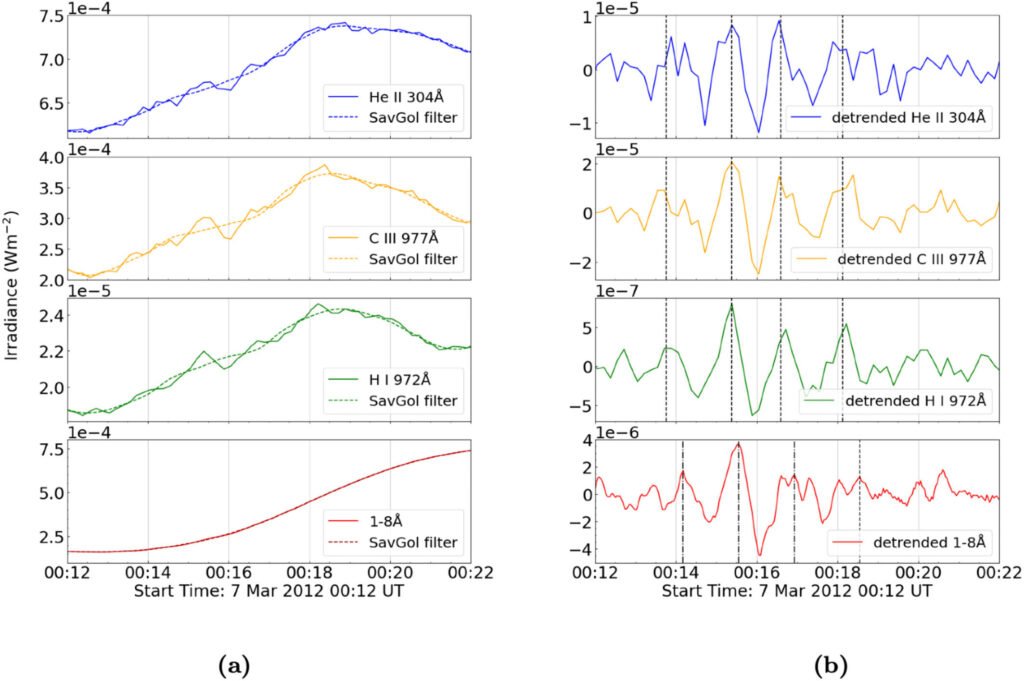
At the same time, back on Earth, a network of GPS satellites and ground-based receivers was quietly monitoring atmospheric density. The Queen’s University researchers noticed something extraordinary: just 30 seconds after each solar pulse, Earth’s atmosphere responded with its own matching pulse. This was not just a general disturbance—it was an almost immediate mirroring, suggesting a profound sensitivity to the subtlest fluctuations in solar radiation.
The atmosphere, it turns out, is not merely a passive shield but an active, vibrating participant in the cosmic drama playing out above.
Why This Matters More Than Ever
Understanding how Earth’s atmosphere reacts to solar flares is not just an academic exercise; it carries immense practical importance. Solar flares have long been known to interfere with satellite communications, GPS systems, and radio signals. In extreme cases, they can trigger widespread radio blackouts and even endanger astronauts outside Earth’s protective magnetic field.
This new research underscores that the effects of solar flares can materialize far faster than previously thought—potentially within just half a minute of a flare reaching its peak. That razor-thin window could make all the difference in mitigating impacts on critical systems, especially as our reliance on satellite navigation, global communications, and space travel continues to grow.
“With the sun currently in the most active phase of its 11-year cycle, flares are happening almost every day,” said O’Hare. “It’s fascinating—and a little alarming—to reveal just how sensitive our atmosphere is. A big flare could disrupt systems so quickly that without sufficient warning systems, we’d barely have time to react.”
Beyond the Flare: A Deeper Cosmic Connection
Traditionally, studies of solar flares and atmospheric impacts have treated the sun and Earth as somewhat separate entities—cause and effect, but distinct. This new research shifts that paradigm dramatically. Dr. Ryan Milligan, who supervised O’Hare’s work, emphasized this transformative viewpoint.
“This work really shows just how sensitive our atmosphere is to subtle variations in solar radiation,” Milligan explained. “What’s remarkable is that Aisling’s study treats the sun and Earth not as isolated systems but as a tightly interconnected pair. It’s a whole new way of thinking about space weather and our place in the solar system.”
The underlying mechanism behind the sun’s pulsations during flares remains an open mystery. Why would a solar flare, a chaotic explosion of magnetic energy, produce such orderly, rhythmic signals? And how exactly does the Earth’s atmosphere, hundreds of millions of kilometers away, pick up on and resonate with these cosmic rhythms so quickly?
These are questions future research will need to answer. But already, the study forces a rethinking of Earth’s vulnerability—and its deep, perhaps even symbiotic, connection to its parent star.
Riding the Solar Storms: The Road Ahead
As humanity ventures deeper into space, sending satellites to orbit and planning for manned missions to the Moon and Mars, understanding the sun’s behavior becomes not just a scientific curiosity but a survival imperative.
The Queen’s University team’s discovery adds a new layer of urgency to efforts to improve space weather forecasting. If Earth’s atmosphere can shift dramatically in just 30 seconds after a solar pulse, our early warning systems will need to be faster, more sensitive, and better integrated than ever before.
This new knowledge also impacts satellite design. Future spacecraft may need enhanced shielding or automatic response mechanisms capable of reacting in real-time to sudden atmospheric pulsations. GPS and communication systems, crucial for everything from military operations to civilian aviation, must be recalibrated to account for the near-instantaneous atmospheric shifts triggered by solar flares.
On a broader scale, this research is a powerful reminder of how dynamic and responsive our home planet truly is. Far from being a static backdrop, Earth’s atmosphere is a living, breathing entity, perpetually engaged in a dialogue—sometimes a whisper, sometimes a shout—with the blazing star that sustains all life.
Aisling O’Hare: Charting New Frontiers
For Aisling O’Hare, this project was more than just a scientific study; it was a personal journey across the world’s leading research institutions. A member of an International Space Science Institute team, she has traveled the globe studying the dynamics of solar activity. Her work epitomizes the spirit of modern science—collaborative, interdisciplinary, and global.
Leading this study at a time when solar activity is ramping up could not have been more timely. Her findings are already influencing how scientists think about space weather and Earth’s atmospheric resilience.
Reflecting on the research, O’Hare’s passion shines through: “It’s been fascinating leading this study and revealing just how sensitive our atmosphere is. Understanding these interactions helps us not only protect our technology but deepens our sense of connection to the wider universe.”
A Sunlit Future
The sun’s light has always been a symbol of life, warmth, and growth. But it is also a source of immense power—power that, as this new research shows, reaches into Earth’s atmosphere with an immediacy and intimacy few could have imagined.
As we look toward the future, the Queen’s University Belfast team’s discovery invites us to think differently about the sun, the Earth, and the silent symphony of pulses that bind them together. It is a discovery that, quite literally, reveals the beating heart of the solar system—and reminds us that even across the vastness of space, we are never truly disconnected from the cosmic forces that shaped us.
Reference: Aisling N. O’Hare et al, Quasi‐Periodic Pulsations in Ionospheric TEC Synchronized With Solar Flare EUV Emission, Journal of Geophysical Research: Space Physics (2025). DOI: 10.1029/2024JA033493
